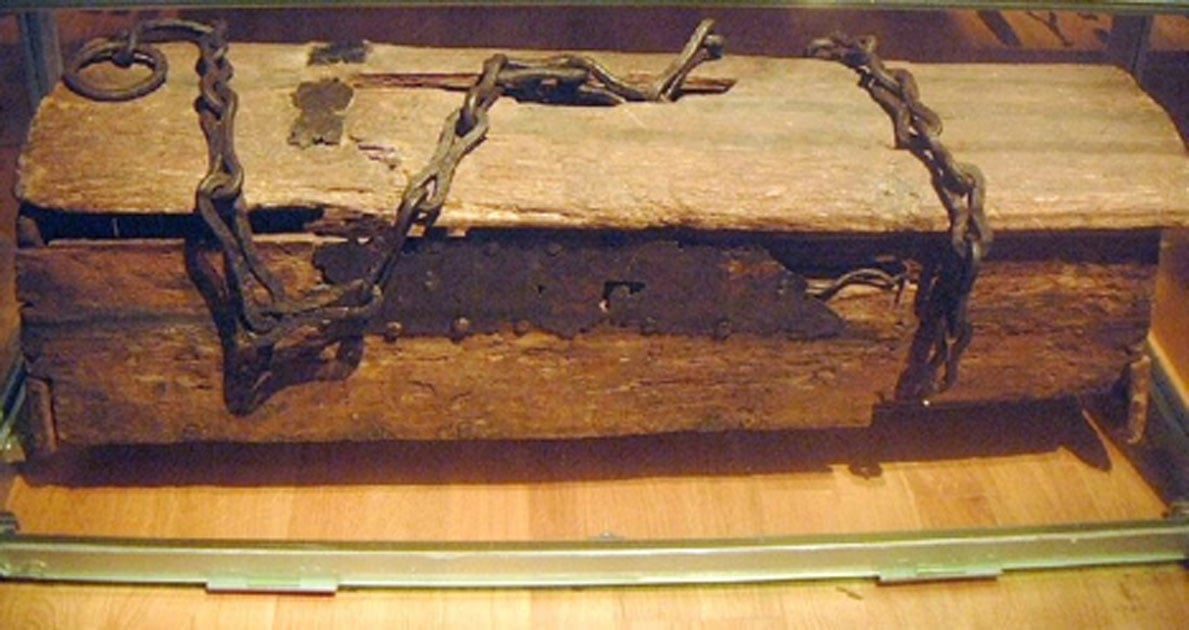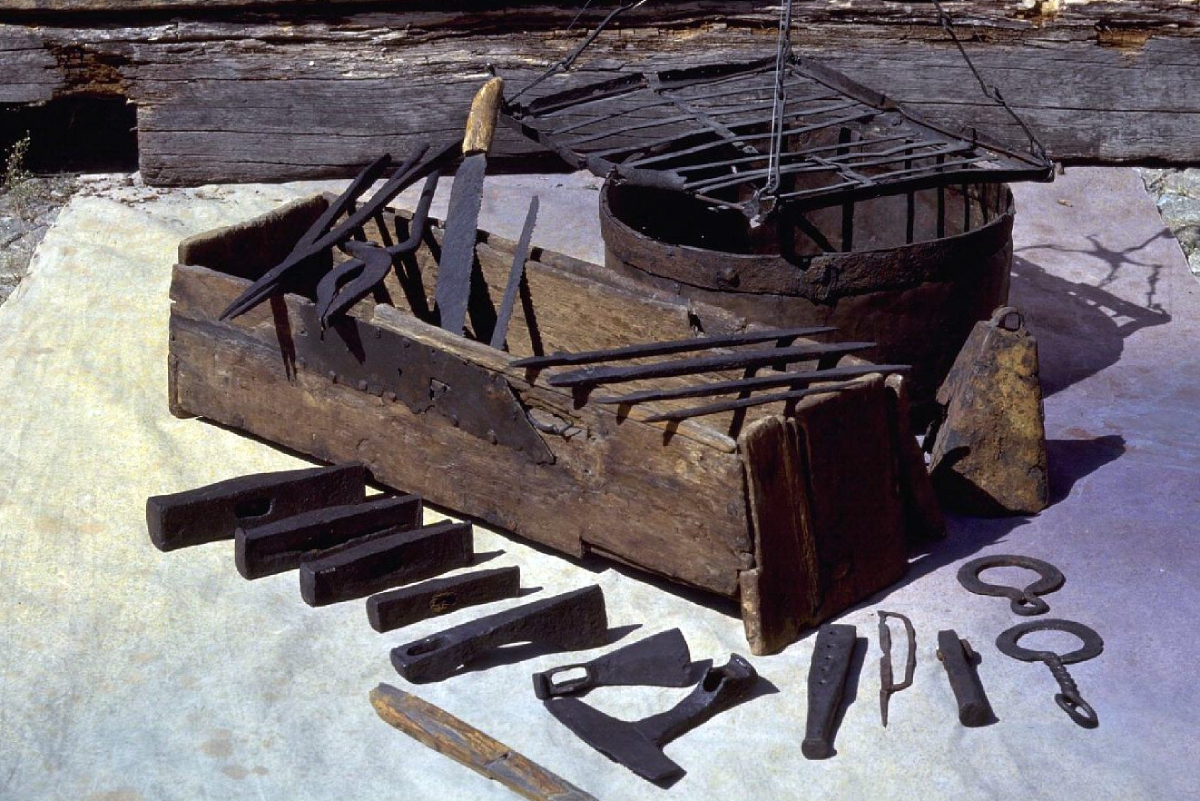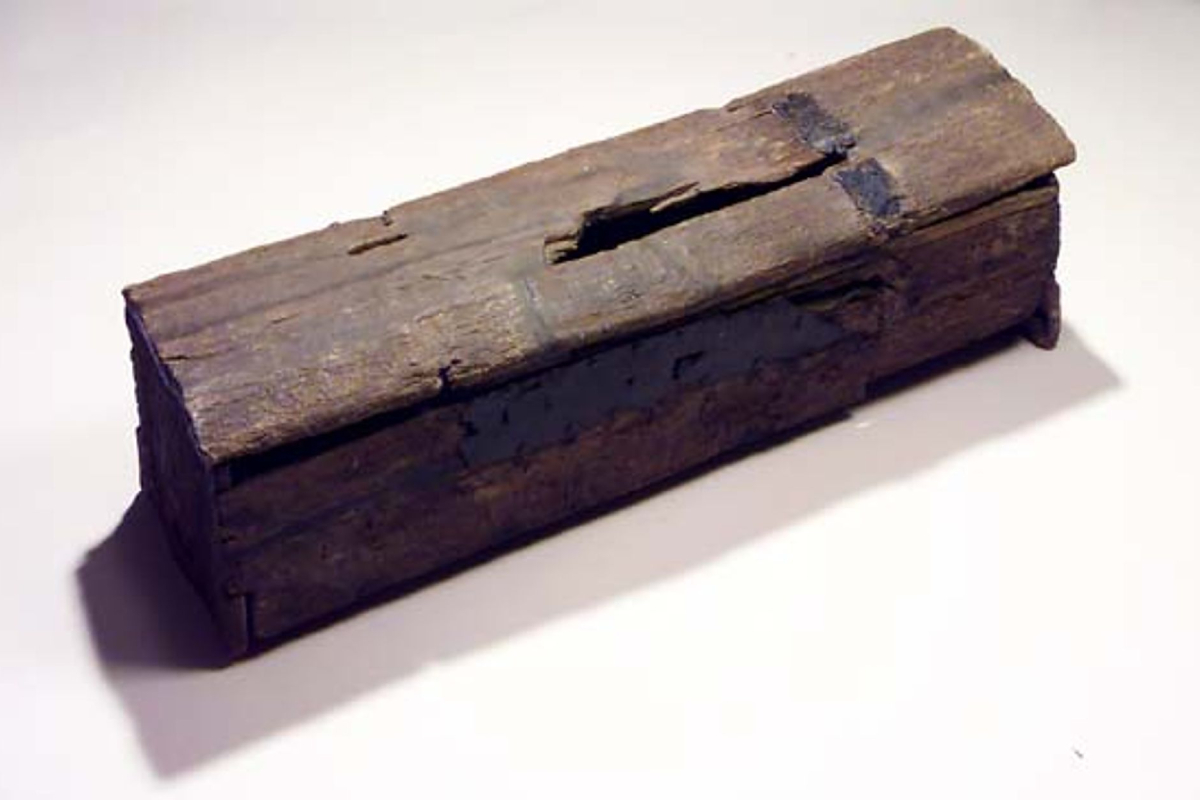The Discovery
In 1936, on the island of Gotland in Sweden, a farmer named Hugo Kraft stumbled upon an extraordinary find while plowing drained fields. His plow struck something solid, revealing a tool chest locked with a padlock and wrapped in a chain. The chest, measuring 90 cm long, 26 cm wide, and 24 cm high, was dated by the Swedish Historical Museum to the Viking period (800-1100 AD).

The Contents of the Chest
Inside the chest was an impressive collection of over 200 tools, including axes, hammers, tongs, chisels, saw blades, hand drills, and locks—tools for both woodworking and metalworking. What makes this find significant is that the tool designs closely resemble modern hand tools, showing little change since Roman times. This makes it one of the oldest and most complete assemblages of European tools from the Viking era.

Why It Was Hidden
The reason the chest was found in the lake remains unknown. It may have been lost in a boat wreck or deliberately hidden. The value of the tools inside was immense, as metal was expensive during the Viking period—one sword could cost up to four years’ wages for the average person. Such a loss would have been substantial to its owner, emphasizing the chest’s importance.

Legacy and Importance
The Mästermyr Chest offers rare insight into Viking craftsmanship and the essential tools of their daily lives. It also illustrates the long-standing design principles of hand tools that persist to this day, connecting modern craftsmanship to its ancient origins.

